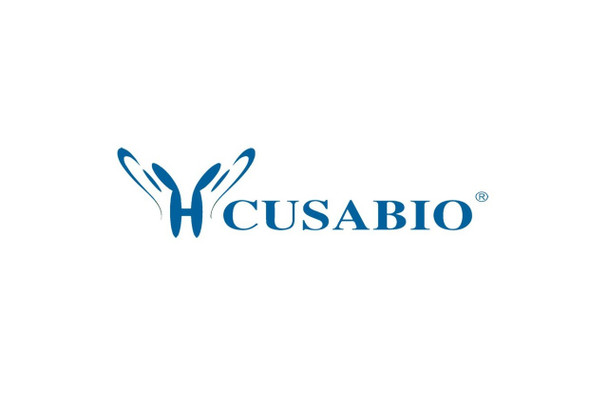Cusabio Human Recombinants
Recombinant Human Cathepsin D (CTSD), partial | CSB-EP006187HU1
- SKU:
- CSB-EP006187HU1
- Availability:
- 13 - 23 Working Days
Description
Recombinant Human Cathepsin D (CTSD), partial | CSB-EP006187HU1 | Cusabio
Alternative Name(s): CatD; CATD_HUMAN; Cathepsin D; Cathepsin D heavy chain; CD; Ceroid lipofuscinosis neuronal 10; CLN10; CPSD; ctsd; Epididymis secretory sperm binding protein Li 130P; HEL S 130P; Lysosomal aspartyl peptidase; Lysosomal aspartyl protease; MGC2311
Gene Names: CTSD
Research Areas: Neuroscience
Organism: Homo sapiens (Human)
AA Sequence: IPEVLKNYMDAQYYGEIGIGTPPQCFTVVFDTGSSNLWVPSIHCKLLDIACWIHHKYNSDKSSTYVKNGTSFDIHYGSGSLSGYLSQDTVSVPCQSASSASALGGVKVERQVFGEATKQPGITFIAAKFDGILGMAYPRISVNNVLPVFDNLMQQKLVDQNIFSFYLSRDPDAQPGGELMLGGTDSKYYKGSLSYLNVTRKAYWQVHLDQVEVASGLTLCKEGCEAIVDTGTSLMVGPVDEVRELQKAIGAVPLIQGEYMIPCEKVSTLPAITLKLGGKGYKLSPEDYTLKVSQAGKTLCLSGFMGMDIPPPSGPLWILGDVFIGRYYTVFDRDNNR
Source: E.coli
Tag Info: N-terminal 6xHis-tagged
Expression Region: 67-403aa
Sequence Info: Partial
MW: 40.8 kDa
Purity: Greater than 90% as determined by SDS-PAGE.
Relevance: Acid protease active in intracellular protein breakdown. Involved in the pathogenesis of several diseases such as breast cancer and possibly Alzheimer disease.
Reference: Proteomic and bioinformatic characterization of the biogenesis and function of melanosomes.Chi A., Valencia J.C., Hu Z.-Z., Watabe H., Yamaguchi H., Mangini N.J., Huang H., Canfield V.A., Cheng K.C., Yang F., Abe R., Yamagishi S., Shabanowitz J., Hearing V.J., Wu C., Appella E., Hunt D.F.J. Proteome Res. 5:3135-3144(2006)
Storage: The shelf life is related to many factors, storage state, buffer ingredients, storage temperature and the stability of the protein itself. Generally, the shelf life of liquid form is 6 months at -20?/-80?. The shelf life of lyophilized form is 12 months at -20?/-80?.
Notes: Repeated freezing and thawing is not recommended. Store working aliquots at 4? for up to one week.
Function: Acid protease active in intracellular protein breakdown. Plays a role in APP processing following cleavage and activation by ADAM30 which leads to APP degradation
Involvement in disease: Ceroid lipofuscinosis, neuronal, 10 (CLN10)
Subcellular Location: Lysosome, Melanosome, Secreted, extracellular space
Protein Families: Peptidase A1 family
Tissue Specificity: Expressed in the aorta extracellular space (at protein level) (PubMed:20551380). Expressed in liver (at protein level) (PubMed:1426530).
Paythway: Estrogensignalingpathway
Form: Liquid or Lyophilized powder
Buffer: If the delivery form is liquid, the default storage buffer is Tris/PBS-based buffer, 5%-50% glycerol. If the delivery form is lyophilized powder, the buffer before lyophilization is Tris/PBS-based buffer, 6% Trehalose, pH 8.0.
Reconstitution: We recommend that this vial be briefly centrifuged prior to opening to bring the contents to the bottom. Please reconstitute protein in deionized sterile water to a concentration of 0.1-1.0 mg/mL.We recommend to add 5-50% of glycerol (final concentration) and aliquot for long-term storage at -20?/-80?. Our default final concentration of glycerol is 50%. Customers could use it as reference.
Uniprot ID: P07339
HGNC Database Link: HGNC
UniGene Database Link: UniGene
KEGG Database Link: KEGG
STRING Database Link: STRING
OMIM Database Link: OMIM










